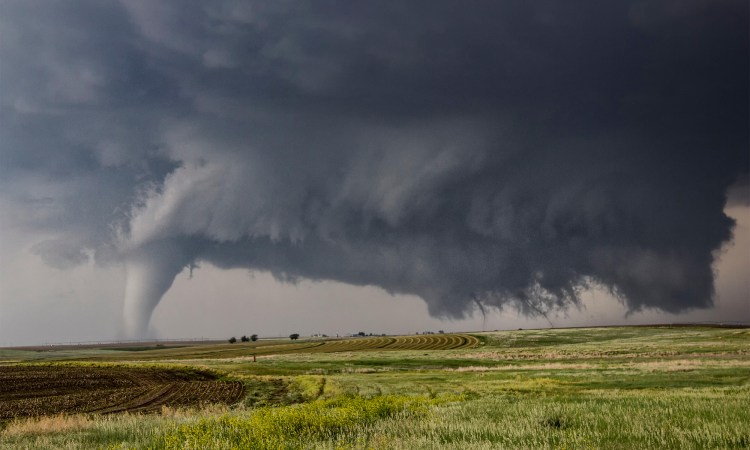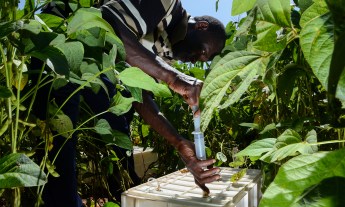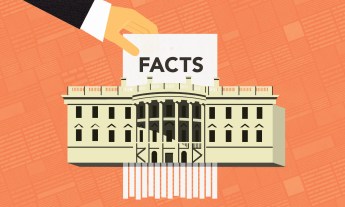
The deadly tornado outbreak that tore through communities from Arkansas to Illinois on the night of December 10-11 2021, was so unusual in its duration and strength that a lot of people — including the US president — are asking what role climate change might have played, and if tornadoes will become more common in a warming world.
Both questions are easier asked than answered, but research is offering new clues.
I’m an atmospheric scientist who studies severe convective storms like tornadoes and the influences of climate change, and here’s what the scientific research shows so far.
1. Tornadoes are super-hard to predict
To understand how rising global temperatures will affect the climate in the future, scientists use complex computer models that characterize the whole Earth’s system, from the Sun’s energy streaming in to how the soil responds and everything in between from year to year and season to season. These models solve millions of equations on a global scale. Each calculation adds up, requiring far more computing power than a desktop computer can handle.
Think of predicting tornadoes like the zoom function on a camera looking at a distant mountain: You can see the forest, but individual trees are harder to make out
To project how Earth’s climate will change through the end of the century, we currently use a broad scale. Think of it like the zoom function on a camera looking at a distant mountain. You can see the forest, but individual trees are harder to make out, and a pine cone in one of those trees is too tiny to see even after you blow up the image. With climate models, the smaller the object, the harder it is to see.
Tornadoes and the severe storms that create them are far below the typical scale that climate models can predict. Instead, what we can do is look at the large-scale ingredients that make conditions ripe for tornadoes to form.
Two key ingredients for severe storms are (1) energy driven by warm, moist air promoting strong updrafts, and (2) changing wind speed and direction, known as wind shear, which allows storms to become stronger and longer-lived. A third ingredient, which is harder to identify, is a trigger to get storms to form, such as a really hot day, or perhaps a cold front. Without this ingredient, not every favorable environment leads to severe storms or tornadoes, but the first two conditions still make severe storms more likely.
By using these ingredients to characterize the likelihood of severe storms and tornadoes forming, climate models can tell us something about the changing risk.
2. Climate change is projected to increase the frequency of severe storms
Climate model projections for the United States suggest that the overall likelihood of favorable ingredients for severe storms will increase by the end of the 21st century. The main reason is that warming temperatures accompanied by increasing moisture in the atmosphere increase the potential for strong updrafts.
Rising global temperatures are driving significant changes for seasons that we traditionally think of as rarely producing severe weather. Stronger increases in warm humid air in fall, winter and early spring mean there will be more days with favorable severe thunderstorm environments — and when these storms occur, they have the potential for greater intensity.
Only a small fraction of the storms produced in a favorable environment will produce a tornado at all
Over smaller areas, we can simulate thunderstorms in these future climates, which gets us closer to answering whether severe storms will form. Several studies have modeled changes to the frequency of intense storms to better understand this change to the environment.
We are already seeing evidence in the past few decades of shifts toward conditions more favorable for severe storms in the cooler seasons, while the summertime likelihood of storms forming is decreasing.
But for tornadoes, things get trickier. Even in an otherwise spot-on forecast for the next day, there is no guarantee that a tornado will form. Only a small fraction of the storms produced in a favorable environment will produce a tornado at all.
Several simulations have explored what would happen if a tornado outbreak or a tornado-producing storm occurred at different levels of global warming. Projections suggest that stronger, tornado-producing storms may be more likely as global temperatures rise, though strengthened less than we might expect from the increase in available energy.
3. But there’s a lot that scientists are still trying to figure out
Much of what we know about how a warming climate influences severe storms and tornadoes is regional, chiefly in the US. Not all regions around the globe will see changes to severe storm environments at the same rate.
It remains difficult to attribute any single event like this one to climate change
In a recent study, colleagues and I found that the rate of increase in severe storm environments will be greater in the Northern Hemisphere and that it increases more at higher latitudes. In the US, our research suggests that for each 1 degree Celsius (1.8 F) that the temperatures rise, a 14-25 percent increase in favorable environments is likely in spring, fall and winter, with the greatest increase in winter. This is driven predominantly by the increasing energy available due to higher temperatures. Keep in mind that this is about favorable environments, not necessarily tornadoes.
To answer whether climate change influenced the likelihood or intensity of tornadoes in the December 2021 outbreak, it remains difficult to attribute any single event like this one to climate change. Shorter-term influences like the El Niño-Southern Oscillation may also complicate the picture.
There are certainly signals pointing in the direction of a stormier future, but how this manifests for tornadoes is an open area of research.
This article is republished from The Conversation under a Creative Commons license. Read the original article.
From 2016 to 2019, the world saw record-breaking heat waves, rampant wildfires and the longest run of category 5 tropical cyclones on record. So, is the weather actually becoming more extreme? R. Saravanan investigates:















